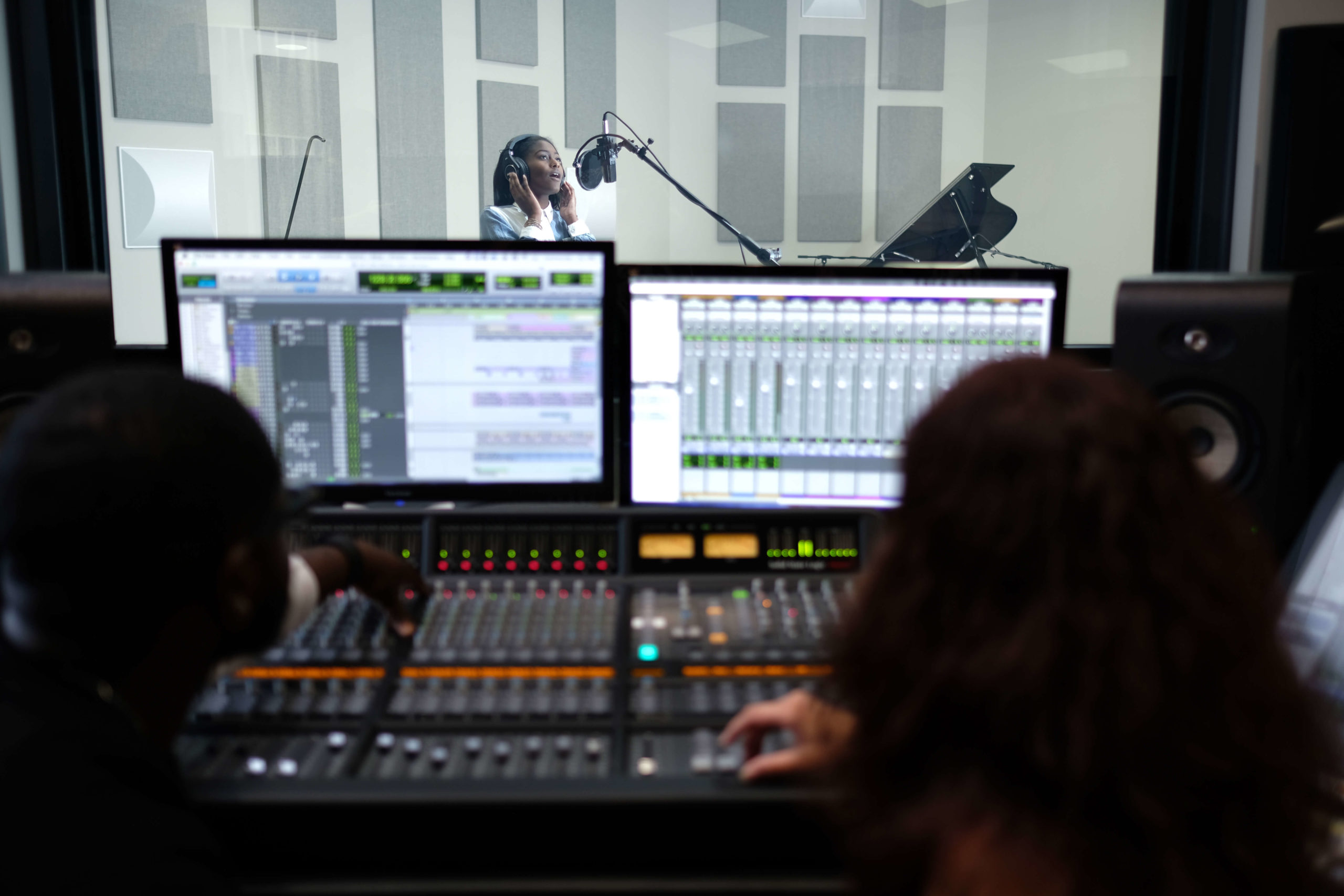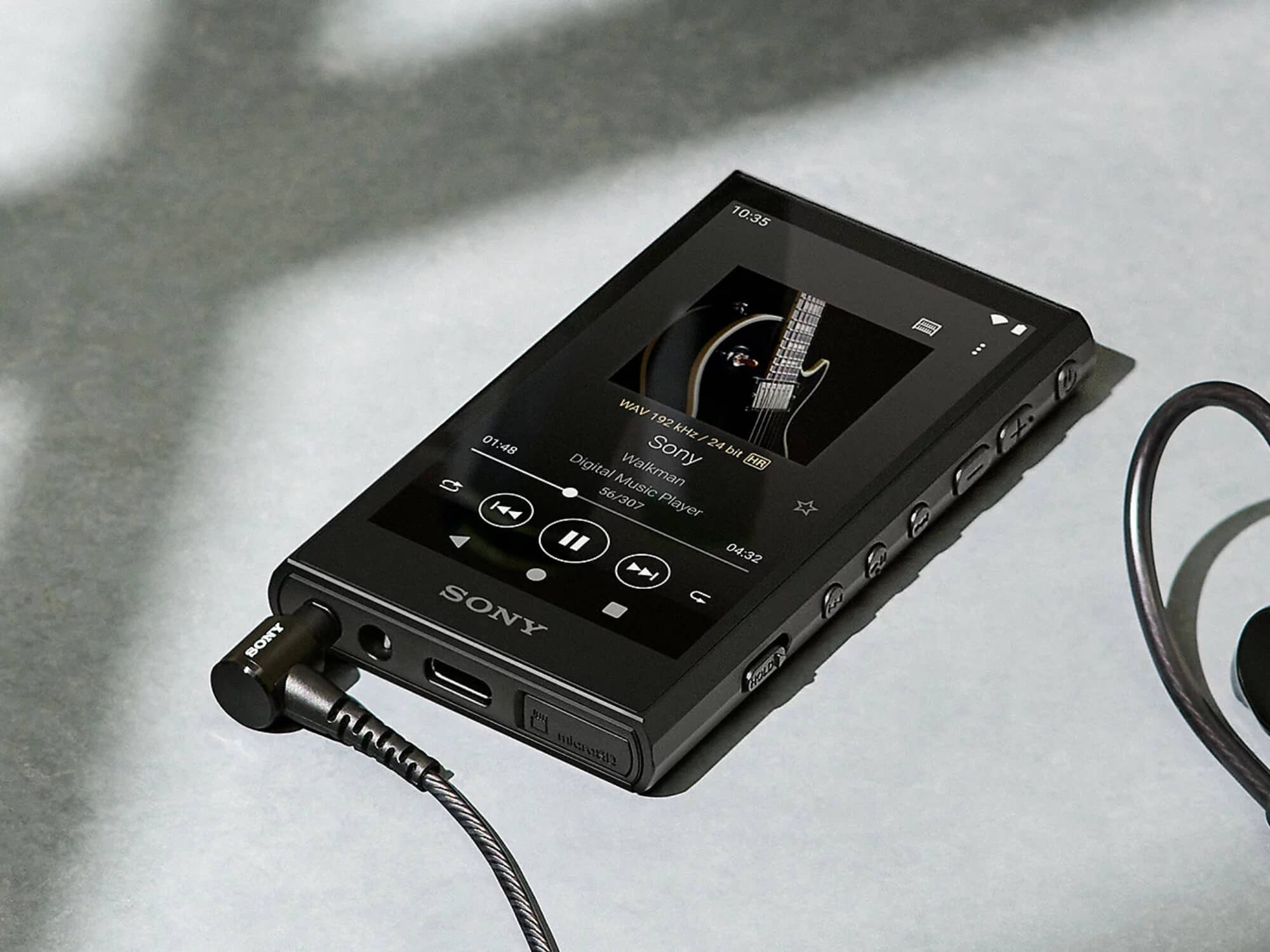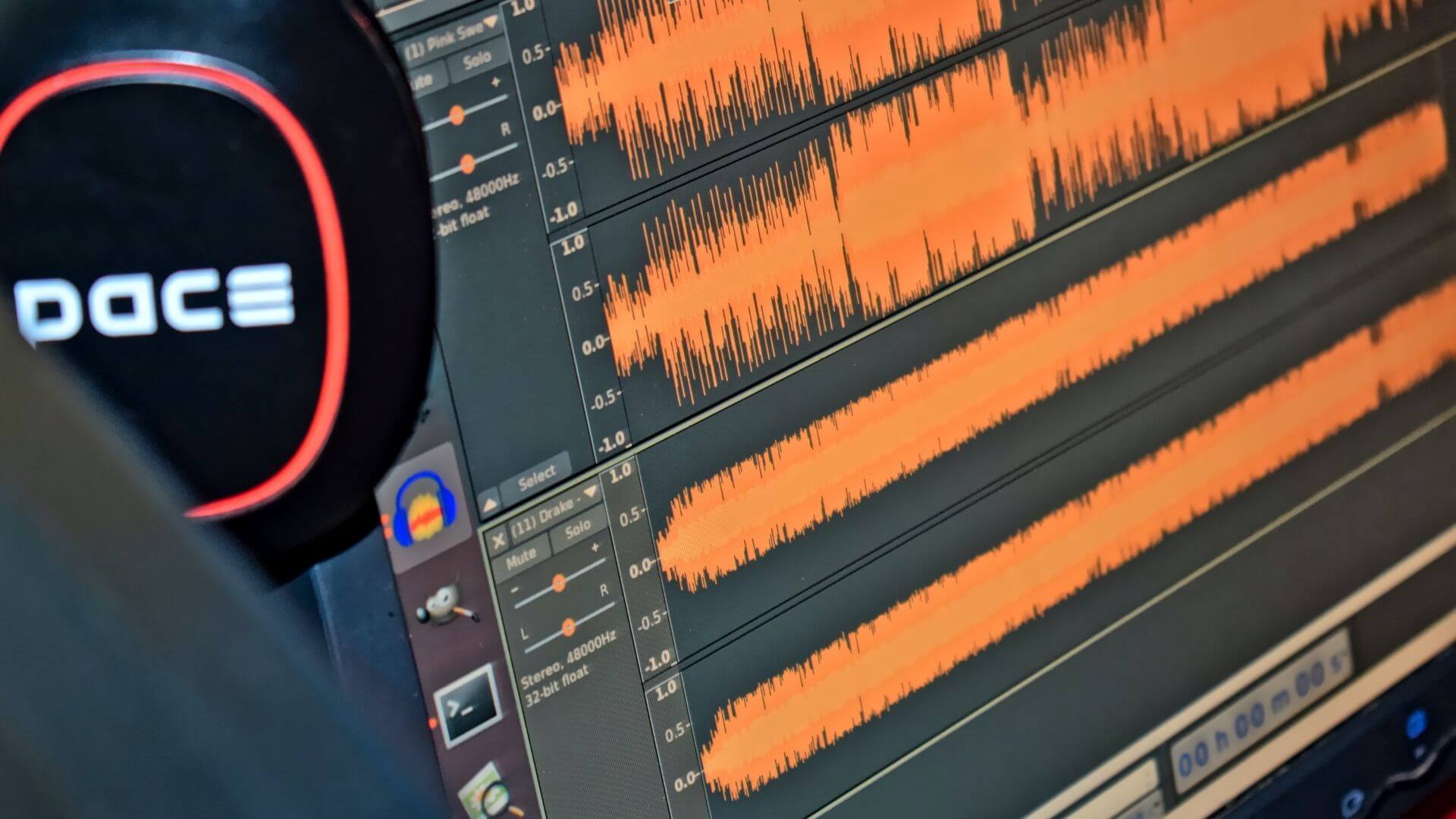Home>Production & Technology>Digital>What Started Digital Music Recording


Digital
What Started Digital Music Recording
Published: March 9, 2024
Learn about the history of digital music recording and how it revolutionized the music industry. Discover the impact of digital technology on music production and distribution.
(Many of the links in this article redirect to a specific reviewed product. Your purchase of these products through affiliate links helps to generate commission for AudioLover.com, at no extra cost. Learn more)
Table of Contents
Introduction
The evolution of music recording has been a remarkable journey, marked by groundbreaking inventions and technological advancements that have revolutionized the way we capture and experience music. From the humble beginnings of the phonograph to the sophisticated digital audio recording technologies of today, the landscape of music production has undergone a profound transformation.
As we delve into the history of digital music recording, it's essential to understand the pivotal moments that paved the way for this technological marvel. The journey begins with the invention of the phonograph, a revolutionary device that laid the foundation for the entire music recording industry.
The phonograph, invented by Thomas Edison in 1877, marked the birth of recorded sound. This ingenious device utilized a stylus to etch grooves onto a rotating cylinder, capturing the vibrations of sound and allowing for playback at a later time. The phonograph not only preserved musical performances but also opened up new possibilities for artists to reach audiences beyond live performances.
Following the invention of the phonograph, the development of magnetic tape recording brought about another significant leap in music recording technology. In the 1930s, German engineer Fritz Pfleumer pioneered the use of magnetic tape for recording sound, laying the groundwork for the magnetic tape recorders that would dominate the industry for decades to come. This innovation allowed for higher fidelity and longer recording times, revolutionizing the way music was captured and reproduced.
The emergence of digital audio recording represents a watershed moment in the history of music production. With the advent of digital technology, the process of recording, editing, and storing music underwent a paradigm shift. Digital audio workstations (DAWs) empowered musicians and producers with unprecedented flexibility and control over the recording process, leading to a new era of creativity and sonic innovation.
In the subsequent sections, we will explore the historical milestones and technological breakthroughs that shaped the evolution of digital music recording, shedding light on the transformative impact of these advancements on the music industry and the way we experience music. Join us on this captivating journey through time as we unravel the fascinating story of digital music recording.
The Invention of the Phonograph
The invention of the phonograph by Thomas Edison in 1877 marked a pivotal moment in the history of music recording. Edison's creation of this groundbreaking device laid the foundation for the entire music recording industry, fundamentally altering the way sound was captured and preserved.
At its core, the phonograph was a marvel of engineering and ingenuity. It utilized a stylus attached to a diaphragm, which vibrated in response to sound. These vibrations were then transmitted to a rotating cylinder coated with a thin layer of tinfoil. As the cylinder rotated, the stylus etched grooves into the tinfoil, effectively capturing the vibrations of the sound. This innovative process allowed for the playback of the recorded sound by retracing the grooves with the stylus, thus reproducing the original sound waves.
The significance of the phonograph extended far beyond its technical capabilities. It represented a profound shift in the way music was experienced and shared. Prior to its invention, music was primarily enjoyed through live performances, limiting the reach and preservation of musical artistry. The phonograph changed this paradigm by enabling the recording and playback of musical performances, effectively immortalizing sound and allowing it to be enjoyed beyond the confines of time and space.
Edison's phonograph not only transformed the music industry but also had far-reaching implications for various aspects of human life. It sparked a wave of innovation and creativity, inspiring artists, inventors, and entrepreneurs to explore the possibilities of recorded sound. The phonograph laid the groundwork for the development of the modern recording industry, setting the stage for the emergence of new musical genres, the rise of global music distribution, and the democratization of musical expression.
In essence, the invention of the phonograph heralded a new era in human history, where the ephemeral nature of sound was transcended, and the beauty of music was immortalized. It paved the way for subsequent advancements in recording technology, shaping the trajectory of music production and consumption for generations to come.
The phonograph stands as a testament to the power of human innovation and the enduring impact of transformative inventions. Its legacy continues to resonate in the digital age, serving as a reminder of the profound influence of a single invention on the course of human creativity and cultural evolution.
The Development of Magnetic Tape Recording
The development of magnetic tape recording marked a significant milestone in the evolution of music recording technology. In the 1930s, German engineer Fritz Pfleumer pioneered the use of magnetic tape for recording sound, laying the groundwork for a revolutionary leap in audio recording capabilities.
Pfleumer's innovation harnessed the power of magnetism to capture and reproduce sound with unprecedented fidelity and flexibility. The introduction of magnetic tape recorders represented a quantum leap from the limitations of previous recording mediums, such as phonograph cylinders and shellac discs. Magnetic tape offered several advantages, including higher fidelity, longer recording times, and the ability to edit and manipulate recorded sound.
The magnetic tape recording process involved coating a plastic or paper tape with a fine layer of magnetic material, typically iron oxide. When sound was captured using a magnetic recording head, the fluctuations in the magnetic field induced by the sound waves were imprinted onto the tape as varying magnetic patterns. This allowed for the accurate preservation of sound, capturing nuances and subtleties with remarkable precision.
One of the defining features of magnetic tape recording was its capacity for editing and overdubbing, enabling artists and producers to refine and enhance recorded performances. This newfound flexibility revolutionized the creative process, empowering musicians to experiment with multitrack recording and layering, ultimately expanding the sonic possibilities of music production.
The widespread adoption of magnetic tape recorders in professional recording studios and the music industry at large transformed the landscape of music production. The enhanced fidelity and editing capabilities offered by magnetic tape recording elevated the standard of audio quality, leading to the creation of iconic recordings that continue to captivate audiences to this day.
Furthermore, magnetic tape recording played a pivotal role in the development of popular music genres, as artists embraced the newfound freedom to experiment with innovative recording techniques and sonic textures. The advent of stereo recording, made possible by magnetic tape technology, enriched the listening experience, immersing audiences in a rich and spatially dynamic sonic environment.
The impact of magnetic tape recording reverberated across the music industry, shaping the way music was created, recorded, and consumed. Its influence extended beyond the realm of music, influencing the fields of broadcasting, film production, and audio engineering, solidifying its status as a transformative force in the realm of sound recording.
In essence, the development of magnetic tape recording represented a watershed moment in the history of music technology, laying the groundwork for subsequent advancements that would ultimately lead to the digital revolution in audio recording. The legacy of magnetic tape endures as a testament to the enduring impact of innovation and the profound influence of technology on the art of music creation.
The Emergence of Digital Audio Recording
The emergence of digital audio recording represents a monumental leap in the evolution of music production and sound engineering. The transition from analog to digital technology revolutionized the way music was recorded, edited, and reproduced, ushering in a new era of creativity and sonic innovation.
At the heart of digital audio recording lies the transformative power of binary code. Unlike analog recording, which captures and reproduces sound as continuous waveforms, digital recording represents sound as discrete numerical values. This fundamental shift in representation enabled unprecedented precision and fidelity in capturing and reproducing audio.
The advent of digital audio workstations (DAWs) empowered musicians and producers with unparalleled flexibility and control over the recording process. DAWs allowed for seamless multitrack recording, precise editing, and sophisticated signal processing, opening up a vast array of creative possibilities. Artists could now manipulate sound with unprecedented precision, shaping every sonic detail to perfection.
One of the defining features of digital audio recording is its non-destructive editing capabilities. Unlike analog tape, where editing often involved physically cutting and splicing the recording, digital audio allowed for seamless and reversible editing. This transformative capability streamlined the creative process, enabling artists to experiment fearlessly and refine their musical vision without the constraints imposed by traditional recording methods.
The transition to digital audio recording also brought about a paradigm shift in the realm of sound reproduction. The introduction of compact discs (CDs) as a digital audio storage medium marked a significant departure from analog formats such as vinyl records and cassette tapes. CDs offered pristine audio quality, durability, and the convenience of random access, allowing listeners to navigate tracks with ease.
Furthermore, the digitization of music opened up new horizons for distribution and accessibility. The rise of digital music formats, such as MP3, and the advent of online music platforms transformed the way music was consumed and shared. The internet became a global stage for artists to reach audiences worldwide, transcending geographical boundaries and traditional distribution channels.
The impact of digital audio recording extended beyond the realm of music, influencing fields such as film scoring, video game sound design, and multimedia production. The seamless integration of digital audio technology into various creative disciplines underscored its versatility and transformative potential.
In essence, the emergence of digital audio recording marked a seismic shift in the landscape of music production and consumption. Its influence reverberated across the music industry, shaping the creative process, redefining the listening experience, and democratizing the art of music creation. The legacy of digital audio recording endures as a testament to the enduring impact of technological innovation on the art of sound.
Conclusion
The evolution of music recording, from the invention of the phonograph to the emergence of digital audio recording, represents a captivating journey through time, marked by transformative innovations and technological milestones. Each phase of this evolution has left an indelible imprint on the music industry, shaping the way we create, experience, and share music.
The invention of the phonograph by Thomas Edison heralded a new era in the preservation and dissemination of sound, transcending the limitations of live performances and paving the way for the recording industry as we know it today. The development of magnetic tape recording further elevated the fidelity and creative possibilities of music production, revolutionizing the way music was captured and reproduced.
However, it was the emergence of digital audio recording that truly revolutionized the landscape of music production. The transition from analog to digital technology empowered artists and producers with unprecedented control and flexibility, unleashing a wave of creativity and sonic innovation. The advent of digital audio workstations and the digitization of music storage and distribution transformed the way music was created, consumed, and shared, ushering in a new era of accessibility and artistic expression.
As we reflect on the journey of digital music recording, it becomes evident that each technological leap has not only reshaped the tools and processes of music production but has also redefined the cultural and artistic impact of music. The democratization of music creation, the globalization of musical expression, and the immersive listening experiences made possible by digital audio recording have enriched the lives of countless individuals around the world.
The legacy of digital music recording serves as a testament to the enduring power of human ingenuity and innovation. It underscores the profound influence of technology on the art of sound, transcending boundaries and unlocking new frontiers of creative expression. The transformative impact of digital music recording continues to resonate in the digital age, shaping the future of music production and the way we engage with the timeless art form of sound.
In essence, the evolution of digital music recording stands as a testament to the enduring power of human creativity and the relentless pursuit of sonic excellence. It represents a journey of innovation, resilience, and artistic evolution, shaping the way we experience and cherish the beauty of music for generations to come.











